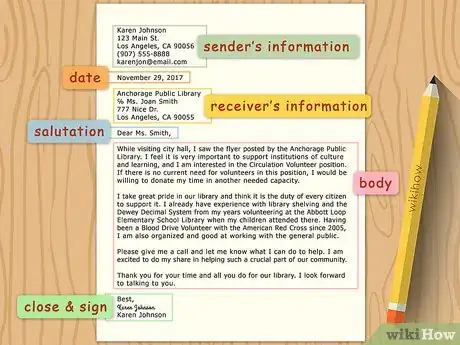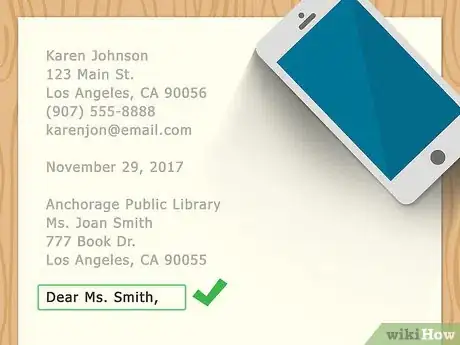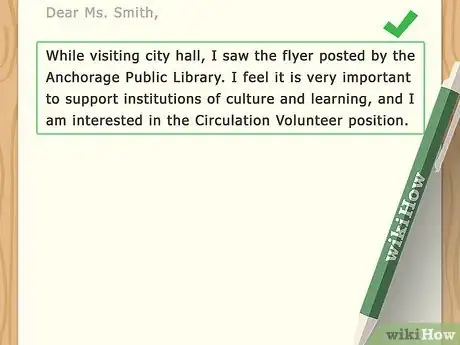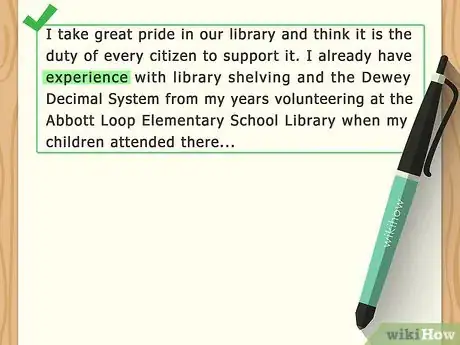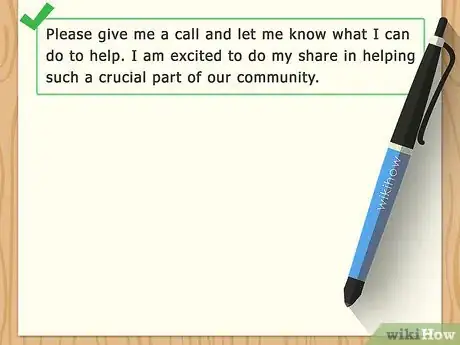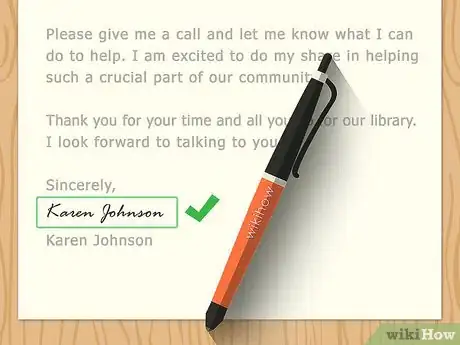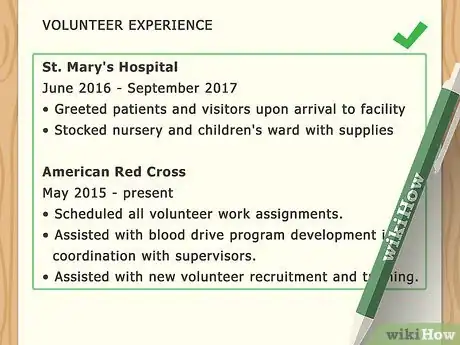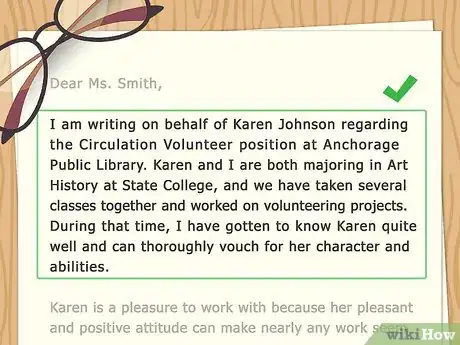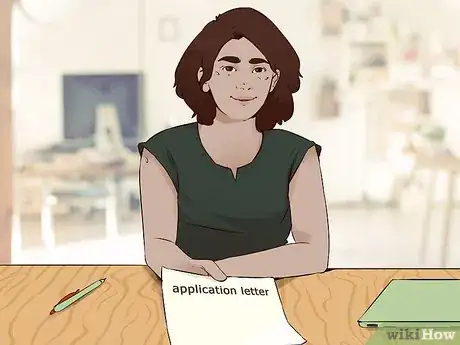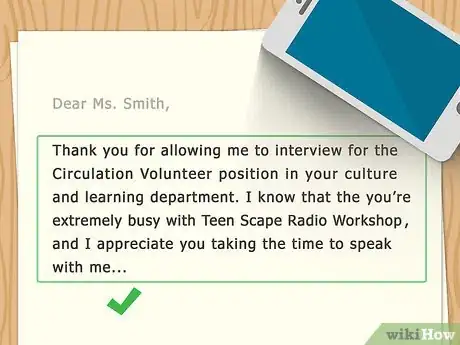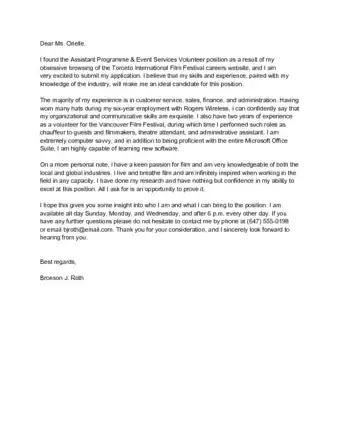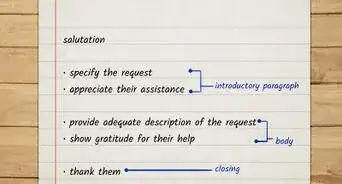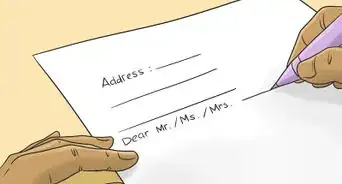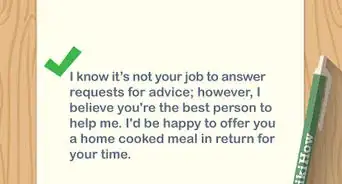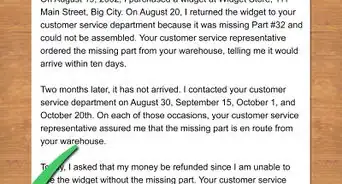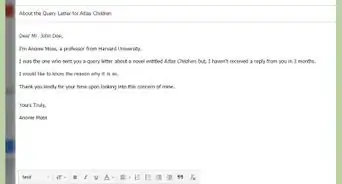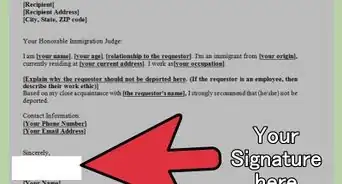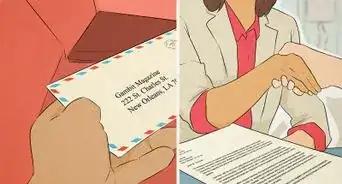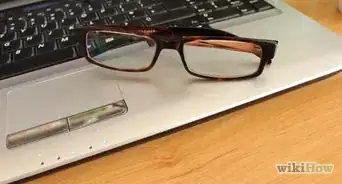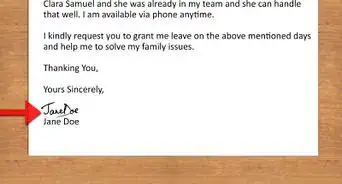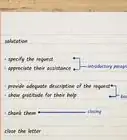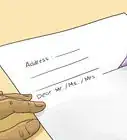This article was co-authored by Katherine Kirkinis, Ed.M., MA. Katherine Kirkinis is a Career Coach and Psychotherapist who has served as a career expert for Forbes, Medium, Best Life, and Working Mother Magazine, and as a diversity and inclusion expert for ATTN and Quartz. She specializes in working with issues of career, identity, and indecision. She has doctoral-level training in career counseling and career assessment and has worked with hundreds of clients to make career decisions through career assessments. She is pursuing a doctoral degree at The University of Albany, SUNY where her work focuses on diversity and inclusion, racism in the workplace, and racial identity. She is a published author and has been featured in academic journals as well as popular media outlets. Her research has been presented at 10+ national APA conferences since 2013.
There are 7 references cited in this article, which can be found at the bottom of the page.
wikiHow marks an article as reader-approved once it receives enough positive feedback. In this case, several readers have written to tell us that this article was helpful to them, earning it our reader-approved status.
This article has been viewed 1,129,653 times.
Volunteering is the act of giving your time and services to another person or organization without the expectation of monetary reward. You should first choose an organization to volunteer with. When you know who you wish to offer your services to, you can write a letter asking to volunteer by explaining your reasons for volunteering, expressing interest in a particular volunteer position, and discussing the ways in which your skills and experiences can benefit others. Knowing how to write a volunteer letter and what information to include could help you land a life-changing role at an organization you care about.
Steps
Finding a Position
-
1Browse open volunteer positions. These can usually be found on a company's website, either with the list of paid job openings or in a separate listing specifically for volunteer positions.
- Look at multiple positions to find one that would fit you best.
- Get a sense of what the position you're interested in requires of its applicants. It's important to do this before applying, because even though it is not a paid position, there may still be a certain skill set, level of experience, or education background required for that position.
-
2Research the company. Once you've found a position that you're interested in, you should familiarize yourself with the company or organization that you're interested in working with. Even though you may be interested in and qualified for a certain position, you may find that the organization's values are significantly different from your own. Before applying to any position, you want to ensure that you will be happy working in that position and that you would be a good fit for the organization.
- Read the organization's mission statement and values. These should be available somewhere on the organization's website, and can save you time and frustration down the line.
Advertisement -
3Find out who to contact. If the volunteer position you're applying to was listed online or in print, the announcement should have a contact person listed for interested applicants. You'll want to know who is responsible for hiring/recruiting new personnel, as well as that person's contact information.
- If no contact person is listed in the announcement, try searching on the organization's website to determine who is in charge of personnel. You may need to contact the organization's human resources department to find this information.
- If hiring decisions are made by a high-ranking executive, you may need to address your letter to that individual.
Drafting a Letter
-
1Keep it professional. You should write your letter the same way you would if you were applying for a paid position. Be professional and consistent in your letter, as a poorly-written letter of interest could cost you the position.
- Use a uniform type size and font that are appropriate for a business letter. Stick with a font size between 10 and 12 points, and choose a font that is easy to read and has clean lines, like those in the sans serif family. Some examples of professional-looking fonts include Arial, Century Gothic, Futura, Lucida Sans, News Gothic, Technical, Times New Roman, and Rockwell.[1]
- Do not use any unusual or unique colors in your letter. Type the body of your letter in black.
-
2Format your letter. You'll want to follow proper formatting protocol to make your letter look as professional as possible.
- Write your contact information in the upper lefthand corner of the document. Include your full name, address, telephone number, and email address.[2]
- Insert two or three line breaks, then write out the contact person's information. Start with their full name (or a proper title, if no first name is given - for example, Ms. Stone), the department that person works in, the name of the organization you are hoping to work with, and the organization's address.[3]
- You may wish to include the date on your letter so that the person reviewing your application can see when you applied. This can be inserted between your contact information and the organization's.[4]
-
3Begin your letter. The first thing you should do (after including your contact information and the organization's contact information) is to address the letter's recipient with a proper title. If the recipient is a doctor or has earned a doctorate, address them as Doctor. If not, use Mr. or Ms. If the gender of the recipient is unclear, use the person's full name rather than a title.[5] If there is no contact person listed in the announcement and you cannot find out whom you should address your letter to, you may be able to get away with using a subject line instead of a formal salutation.[6]
-
4Write the first paragraph. This part of the letter is the venue in which you will market yourself to the administration at your organization of choice. You want to introduce yourself and make your intentions known right from the start.
- Include a statement of interest in the position.
- Mention where you saw the announcement for this volunteer opportunity.
- Write two to three sentences outlining your experience and expertise in the field of your interest.
- If you have a formal education or have taken coursework in the field to which you're applying, mention that in this section.
- Reference the organization's mission statement or values, and address why that mission or set of values is important to you. You should also tie your education, experience, and/or interests to the company's values or mission statement. Let the hiring party know that you are willing and able to work toward the organization's goals.
-
5Write the second paragraph. Now that you've introduced yourself and formally declared your interest in volunteering your time and efforts, let the hiring party know a bit more about yourself.
- Discuss your employment and volunteer history, and talk about how that experience it is relevant to the position. If your previous jobs are not directly relevant to the volunteer position, then mention your employment history as a way to highlight your specific strengths as an employee. You may want to focus on your work ethic, your dedication to your current or former employers, and any transferrable skills that could be relevant to the volunteer position you're applying for.
- Name any skills you possess that would be useful or relevant for this position, and talk about why those skills would be useful at the volunteer organization.
- If you have any substantial achievements that you are proud of (and that have relevant or transferrable skills), detail how those achievements make you an ideal candidate for the volunteer position you're interested in.
- Include any major issues or problems you were successfully able to identify and solve at your current or former jobs or internships.[7]
- Discuss any ways in which you successfully innovated new policies or procedures at your current or previous jobs or internships.[8]
- Incorporate any instances that illustrate your ability to take initiative and show responsibility or leadership skills.[9]
-
6Write the third paragraph. The first two paragraphs should have successfully introduced you as a volunteer candidate, discussed why you're interested in the position, and illustrated why you are a viable candidate for the position. In your closing paragraph, you'll want to wrap up the letter by laying out what you are able to commit to.
- Let the hiring party know how much time you can commit to each week. If you have specific days or times that work better for your schedule, let the hiring party know when you're available to volunteer, if you are accepted into the organization.
- Do not assume that you have the position. Writing about yourself and your availability as though you already have the position could be a turn off for the organization's hiring party.
- Ask the hiring party for the opportunity to meet in person to discuss the position further, and let him or her know when you would be available for an interview. It's important to be flexible when trying to set up a meeting/interview, so try to keep your schedule open and be willing to come in on short notice.
-
7Write a professional closing. You'll want to formally thank the hiring party for his or her time and consideration. Use formal, business-appropriate language, including a professional sign-off, such as "Sincerely," "Warm regards," or "Best regards."
-
8Sign the letter. Provide both a typed and handwritten signature. If you are emailing the letter to the hiring party, you may need to print out a copy of the letter, sign it with a pen (use black ink to match the type font), and then scan the signed letter into a PDF file.
Sending Out Your Letter
-
1Proofread your letter. Be sure to look for any typos, misspelled words, grammatical errors, and punctuation errors. These can make an application letter appear sloppy and unprofessional.[10]
-
2Include a resume. Even though you discussed your skills, experience, and qualifications in the letter, you should still send a resume with your letter. This will let the hiring party know the details of your work history and education, with specifics like the duration of a given job or volunteer service. Attaching a resume also shows a certain amount of professionalism on your part. It lets the hiring party know that you take the position seriously, and are willing to work for the opportunity to be a part of the organization.
-
3Arrange for two letters of recommendation. Though not every internship requires letters of recommendation, some do request them. Even if they are not required, including letters of recommendation can be another way to demonstrate your commitment to professionalism.[11]
- Letters of recommendation should be written by professional or personal references who can attest to your character and capabilities.[12]
- In lieu of letters of recommendation, you may want to include a list of professional references with each reference's contact information. This will allow the hiring party to reach out to your references, if he or she needs to, and it shows that you are able to maintain positive working relationships with current and former employers and/or colleagues.
-
4Submit your letter. The organization should specify whether letters are to be submitted online or as a hard copy (which can be sent by mail or dropped of in person). Follow the organization's requirements. If sending your letter by mail, be sure that you have affixed the correct amount of postage to your letter, and that you have the correct contact person's name and mailing address for the envelope.
-
5Give a follow up phone call or email. Wait at least a few days (perhaps even a week) before following up, and don't be too pushy or demanding. Simply send a cordial email or place a call during business hours to the contact person for that volunteer position. Let him or her know that you've sent in an application letter and that you wanted to formally express your interest in the opportunity to be a part of the organization. And above all else, remember to be professional and courteous.
-
6Write a thank you note after any interviews you have. This is a polite and professional way to let the hiring party know that you appreciate his or her time. The thank you note can be an actual letter or an email, and you should send a note to each interviewer you met with.[13]
- Address the interviewer by name.[14]
- Thank him or her for the opportunity to meet and discuss the position.[15]
- Try to mention something specific that the interviewer talked about during your meeting. Letting him or her know in the thank you note that you were interested in what he/she said shows that you were paying attention and that you take the opportunity seriously.[16]
- Close with a polite ending that does not assume that you have earned the position. Say something like, "I look forward to discussing this opportunity further," or wish the interviewer luck with the selection process.
- Some organizations are inundated with volunteer requests and may ask that you do not follow up. In each case, do as instructed.
Sample Letters
Expert Q&A
-
QuestionDo you capitalize job titles on a resume?
 Katherine Kirkinis, Ed.M., MAKatherine Kirkinis is a Career Coach and Psychotherapist who has served as a career expert for Forbes, Medium, Best Life, and Working Mother Magazine, and as a diversity and inclusion expert for ATTN and Quartz. She specializes in working with issues of career, identity, and indecision. She has doctoral-level training in career counseling and career assessment and has worked with hundreds of clients to make career decisions through career assessments. She is pursuing a doctoral degree at The University of Albany, SUNY where her work focuses on diversity and inclusion, racism in the workplace, and racial identity. She is a published author and has been featured in academic journals as well as popular media outlets. Her research has been presented at 10+ national APA conferences since 2013.
Katherine Kirkinis, Ed.M., MAKatherine Kirkinis is a Career Coach and Psychotherapist who has served as a career expert for Forbes, Medium, Best Life, and Working Mother Magazine, and as a diversity and inclusion expert for ATTN and Quartz. She specializes in working with issues of career, identity, and indecision. She has doctoral-level training in career counseling and career assessment and has worked with hundreds of clients to make career decisions through career assessments. She is pursuing a doctoral degree at The University of Albany, SUNY where her work focuses on diversity and inclusion, racism in the workplace, and racial identity. She is a published author and has been featured in academic journals as well as popular media outlets. Her research has been presented at 10+ national APA conferences since 2013.
Career Coach & Psychotherapist You typically capitalize job titles in a resume since they usually stand alone on their own line of text. You might also capitalize the job title so it stands out for stylistic reasons.
You typically capitalize job titles in a resume since they usually stand alone on their own line of text. You might also capitalize the job title so it stands out for stylistic reasons. -
QuestionHow do I write a letter to volunteer at an organization to gain experience?
 Community Answer"Dear {insert director of organization}, My name is {insert your name} and I am {insert your age}. I have taken interest in your organization and wish to take part in it to gain volunteer experience. I would love if you could contact me so we could discuss if this is possible. Please contact me at {insert contact information}. Thank you for your time."
Community Answer"Dear {insert director of organization}, My name is {insert your name} and I am {insert your age}. I have taken interest in your organization and wish to take part in it to gain volunteer experience. I would love if you could contact me so we could discuss if this is possible. Please contact me at {insert contact information}. Thank you for your time." -
QuestionHow do I write a letter to be a volunteer as a teacher?
 Community AnswerWrite about your passion for education and teaching others. Share any relevant experience you might have.
Community AnswerWrite about your passion for education and teaching others. Share any relevant experience you might have.
References
- ↑ https://sendgrid.com/blog/best-email-fonts/
- ↑ https://writing.wisc.edu/handbook/assignments/businessletter/
- ↑ http://www.monash.edu.au/students/assets/docs/career-connect/samples/volunteering-job-advert-cover-letter.pdf
- ↑ http://www.monash.edu.au/students/assets/docs/career-connect/samples/volunteering-job-advert-cover-letter.pdf
- ↑ http://www.monash.edu.au/students/assets/docs/career-connect/samples/volunteering-job-advert-cover-letter.pdf
- ↑ http://money.usnews.com/money/careers/articles/2012/10/11/the-7-deadly-sins-of-cover-letter-writing
- ↑ http://www.mtu.edu/career/students/docs/resume-handout.pdf
- ↑ http://www.mtu.edu/career/students/docs/resume-handout.pdf
- ↑ http://www.mtu.edu/career/students/docs/resume-handout.pdf
- ↑ http://money.usnews.com/money/careers/articles/2012/10/11/the-7-deadly-sins-of-cover-letter-writing
- ↑ https://www.thebalancemoney.com/what-is-a-recommendation-letter-2062074
- ↑ https://www.thebalancemoney.com/what-is-a-recommendation-letter-2062074
- ↑ https://careersidekick.com/thank-you-note-after-interview/
- ↑ https://careersidekick.com/thank-you-note-after-interview/
- ↑ https://careersidekick.com/thank-you-note-after-interview/
- ↑ https://careersidekick.com/thank-you-note-after-interview/
About This Article
To write a letter asking to volunteer, start by putting your contact details in the top left-hand corner of the page so the recipient can easily get in touch with you. Then, begin the body of your letter by addressing the recipient with the correct title, like Mr. or Ms. In your first paragraph, introduce yourself and express your interest in volunteering. Next, in the second paragraph, explain how your experience makes you a good candidate. Finally, in the third paragraph, say how much time you can commit to, and conclude the letter with a professional closing, such as "Sincerely." For tips on how to find a volunteering position in your local area, read on!




